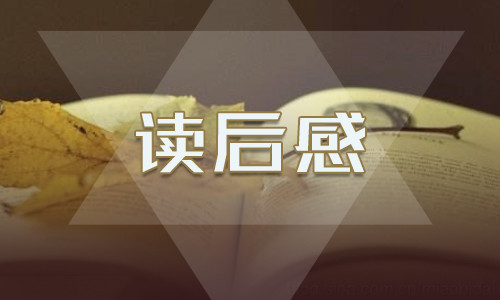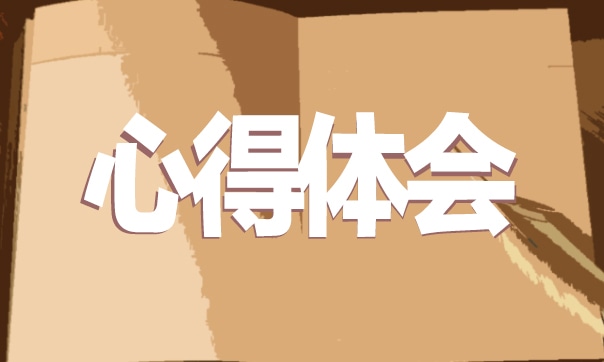Table 19–1. Properties of modified woods
PropertySpecific gravityEquilibrium swellingand shrinkingSpringbackFace checkingGrain raisingSurface finish
Impreg
15% to 20% greater than normalwood
1/4 to 1/3 that of normal wood
Usually 1.0 to 1.4
1/4 to 1/3 that of normal wood at right angle todirection of compression, greater in directionof compression but very slow to attainVery small when properly made
Practically eliminated for specific gravitiesless than 1.3
Greatly reduced for uniform-texture woods,considerable for contrasting grain woodsVarnished-like appearance for specific gravitiesgreater than about 1.0. Cut surfaces can begiven this surface by sanding and buffingNo data but presumably much less than impregConsiderably better than normal woodBetter than impreg because of impermeabilitySomewhat better than normal wood becauseof impermeability
Same as normal wood for long exposuressomewhat better for short exposuresGreatly increased
Slightly more than impreg at low relativehumidity values due to entrapped waterIncreased about in proportion to specificgravity increase
Increased considerably more than proportionalto specific gravity increaseIncreased less than proportional tospecific gravity increase
Increased less than proportional to specificgravity increase parallel to grain, increasedmore perpendicular to grain10 to 20 times that of normal wood
Compreg
1.25 to 1.40
Same as normal wood at right angle tocompression, greater in direction ofcompression but very slow to attainModerate when properly madeAbout the same as in normal woodAbout the same as in normal woodVarnished-like appearance. Cut surfacescan be given this surface by sanding andbuffing
No data but presumably lower than impregNormal but decay occurs somewhat moreslowly
Better than normal wood because of im-permeability but not as good as compregSomewhat better than normal woodbecause of impermeability
Same as normal wood for long exposuressomewhat better for short exposuresNo dataNo data
Staypak
None
Practically eliminatedGreatly reducedSimilar to normal wood
Permeability to watervapor
Decay and termiteresistanceAcid resistanceAlkali resistanceFire resistanceHeat resistanceElectrical conductivity
About 1/10 that of normal woodConsiderably better than normalwood
Considerably better than normalwood
Same as normal woodSame as normal woodGreatly increased
1/10 that of normal wood at 30%RH; 1/1,000 that of normal woodat 90% RHSlightly increased
Increased more than proportionalto specific gravity increaseDecreased significantlyIncreased less than proportionalto specific gravity increaseIncreased considerably morethan proportional to specificgravity increase
About 1/2 of value for normalwood but very susceptible to thevariables of manufactureAbout 1/5 of value for normalwood
About 1/2 of value for normalwood
Cuts cleaner than normal woodbut dulls tools more
Cannot be molded but can beformed to single curvatures attime of assemblySame as normal wood
Heat conductivityCompressive strength
No data but should increase about inproportion to specific gravity increaseIncreased about in proportion to specificgravity increase parallel to grain, increasedmore perpendicular to grain
Increased about in proportion to specificgravity increase
Increased proportional to specific gravityincrease parallel to grain, increased moreperpendicular to grain
10 to 18 times that of normal wood
Tensile strengthFlexural strength
Hardness
Impact strengthToughness
1/2 to 3/4 of value for normal wood but verysusceptible to the variables of manufacture1/3 to 3/4 of value for normal woodIncreased about in proportion to specificgravity increase
Requires metalworking tools and metal-working tool speeds
Can be molded by compression andexpansion molding methods
Same as normal wood after light sanding orin the case of thick stock, machining surfacesplane
Same to somewhat greater than normalwood
Same to somewhat greater than normalwood
Increased about in proportion to specificgravity increase
Requires metalworking tools andmetalworking tool speedsCannot be molded
Izod
Abrasion resistance(tangential)MachinabilityMoldability
Gluabilily
Same as normal wood after light sanding,or in the case of thick stock, machiningsurfaces plane
19–6
Table 19–2. Strength properties of normal and modified laminatesa of yellow birch and a laminated paper plastic
Property
Thickness of laminate (mm (in.))Moisture content at time of test (%)
Specific gravity (based on weight and volume at test)Parallel laminates
Flexure—grain parallel to span (flatwise)e
Proportional limit stress (MPa (lb/in2))Modulus of rupture (MPa (lb/in2
))Modulus of elasticity (GPa (1,000 lb/in2
))Flexure—grain perpendicular to span (flatwise)e
Proportional limit stress (MPa (lb/in2))Modulus of rupture (MPa (lb/in2))Modulus of elasticity (GPa (1,000 lb/in2))Compression parallel to grain (edgewise)e
Proportional limit stress (MPa (lb/in2))UItimate strength (MPa (lb/in2
))Modulus of elasticity (GPa (1,000 lb/in2
))Compression perpendicular to grain (edgewise)f
Proportional limit stress (MPa (lb/in2))Ultimate strength (MPa (lb/in2))Modulus of elasticity (GPa (1,000 lb/in2))Compression perpendicular to grain (flatwise)e
Maximum crushing strength (MPa (lb/in2))Tension parallel to grain (lengthwise)Ultimate strength (MPa (lb/in2))Modulus of elasticity (GPa (1,000 lb/in2
))Tension perpendicular to grain (edgewise)Ultimate strength (MPa (lb/in2))Modulus of elasticity (GPa (1,000 lb/in2))Shear strength parallel to grain (edgewise)f
Johnson double shear across laminations (MPa (lb/in2))Cylindrical double shear parallel to laminations (MPa (lb/in2))Shear modulus
Tension method (GPa (1,000 lb/in2))
Plate shear method (FPL test) (GPa (1,000 lb/in2
))Toughness (FPL test edgewise)f
(J (in-lb))Toughness (FPL test edgewise)f (in-lb/in of width))
(J/mm of widthImpact strength (Izod)—grain lengthwise
Flatwise (notch in face) (J/mm of notch (ft–lb/in of notch))Edgewise (notch in face) (J/mm of notch (ft-lb/in of notch))
laminatedNormalwoodb23.9 (0.94)
9.20.7
79.3 (11,500)140.6 (20,400)16.0 (2,320)6.9 (1,000)13.1 (1,900)1.0 (153)44.1 (6,400)65.5 (9,500)15.8 (2,300)4.6 (670)14.5 (2,100)1.1 (162)—153.1 (22,200)15.8 (2,300)9.6 (1,400)1.1 (166)20.5 (2,980)20.8 (3,020)
1.2 (182)—26.6 (235)1.1 (250)
0.75 (14.0)0.60 (11.3)
uncompressed)(impregnated,Impregc
26.2 (1.03)
5.00.8
109.6 (15,900)129.6 (18,800)16.4 (2,380)9.0 (1,300)11.7 (1,700)1.5 (220)70.3 (10,200)106.2 (15,400)17.0 (2,470)6.9 (1,000)24.8 (3,600)1.7 (243)29.5 (4,280)108.9 (15,800)17.3 (2,510)9.6 (1,400)1.6 (227)23.8 (3,460)24.5 (3,560)
1.8 (255)—14.1 (125)0.53 (120)
0.12 (2.3)0.10 (1.9)
(impregnated,
Compregcompressed)highlyc16.0 (0.63)
5.01.3
184.1 (26,700)250.3 (36,300)25.4 (3,690)29.0 (4,200)31.7 (4,600)4.3 (626)113.1 (16,400)180.0 (26,100)26.1 (3,790)33.1 (4,800)96.5 (14,000)3.9 (571)115.1 (16,700)255.1 (37,000)27.2 (3,950)22.1 (3,200)4.3 (622)50.8 (7,370)39.2 (5,690)
3.1 (454)—16.4 (145)1.0 (230)
0.23 (4.3)0.17 (3.2)
g
(unimpreg-Staypakcompressed)nated, highlyb12.2 (0.48)
4.01.4
138.6 (20,100)271.6 (39,400)30.7 (4,450)22.1 (3,200)34.5 (5,000)4.2 (602)66.9 (9,700)131.7 (19,100)32.2 (4,670)17.9 (2,600)64.8 (9,400)4.0 (583)91.0 (13,200)310.3 (45,000)31.8 (4,610)22.8 (3,300)4.0 (575)43.9 (6,370)21.2 (3,080)
—2.6 (385)28.2 (250)2.3 (515)
0.68 (12.7)
—
Paper laminate(impregnated,
compressed)highlyd13.0 (0.512)
3.2 (0.126)—1.4
109.6 (15,900)252.3 (36,600)20.8 (3,010)72.4 (10,500)167.5 (24,300)10.2 (1,480)49.6 (7,200)144.1 (20,900)21.5 (3,120)29.0 (4,200)125.5 (18,200)11.0 (1,600)291.0 (42,200)245.4 (35,600)25.1 (3,640)137.9 (20,000)11.8 (1,710)122.7 (17,800)20.7 (3,000)
—6.3 (909)——
0.25 (4.7)0.036 (0.67)
19–7
Table 19–2. Strength properties of normal and modified laminatesa of yellow birch and a laminated paper plastic—con.
Normallaminatedwoodb
—7.1 (1,600)37.2 (5,400)0.76 (0.030)
43.69.9—
Impreg(impregnated,uncompressed)c
2210.7 (2,400)63.4 (9,200)1.45 (0.057)
13.72.80
Compreg(impregnated,
highlycompressed)c
84—284.8 (41,300)0.46 (0.018)
2.78.00
Staypak(unimpreg-nated, highlycompressed)b
——302.0 (43,800)0.38 (0.015)
4.3294
Paper laminate(impregnated,
highlycompressed)d
110—245.4 (35,600)0.46 (0.018)
2.2——
PropertyHardness:
Rockwell flatwisee (M–numbers)
Load to embed 11.3-mm (0.444-in.) steel ball to 1/2 its diameter (kN (lb))
Hardness modulus (HM)h (MPa (lb/in2))
Abrasion—Navy wear-test machine (flatwise)e wear per 1,000 revolutions (mm (in.))
Water absorption (24-h immersion) increase in weight (%)Dimensional stability in thickness directionEquilibrium swelling (%)Recovery from compression (%)
Crossband laminates
Flexure—face grain parallel to span (flatwise)e
Proportional limit stress (MPa (lb/in2))Modulus of rupture (MPa (lb/in2))Modulus of elasticity (GPa (1,000 lb/in2))Compression parallel to face grain (edgewise)f
Proportional limit stress (MPa (lb/in2))Ultimate strength (MPa (lb/in))Modulus of elasticity (GPa (1,000 lb/in))Tension parallel to face grain (lengthwise)Ultimate strength (MPa (lb/in2))Modulus of elasticity (GPa (1,000 lb/in2))Toughness (FPL test edgewise)f (J/mm of width (in-lb/in of width))
ab
2
2
47.6 (6,900)90.3 (13,100)9.0 (1,310)22.8 (3,300)40.0 (5,800)9.4 (1,360)84.8 (12,300)8.9 (1,290)0.47 (105)
55.8 (8,100)78.6 (11,400)11.5 (1,670)35.8 (5,200)78.6 (11,400)10.3 (1,500)54.5 (7,900)10.1 (1,460)0.18 (40)
99.3 (14,400)157.2 (22,800)17.1 (2,480)60.0 (8,700)164.8 (23,900)15.8 (2,300)113.8 (16,500)15.1 (2,190)0.51 (115)
78.6 (11,400)173.0 (25,100)20.0 (2,900)35.8 (5,200)96.5 (14,000)18.6 (2,700)168.9 (24,500)17.7 (2,570)1.4 (320)
86.9 (12,600)215.8 (31,300)15.4 (2,240)34.5 (5,000)130.3 (18,900)16.3 (2,370)187.5 (27,200)18.6 (2,700)
—
Laminates made from 17 plies of 1.6-mm (1/16-in.) rotary-cut yellow birch veneer.
Veneer conditioned at 27°C (80°F) and 65% relative humidity before assembly with phenol resin film adhesive.c
Impregnation, 25% to 30% of water-soluble phenol-formaldehyde resin based on the dry weight of untreated veneer.d
High-strength paper (0.076-mm (0.003-in. thickness)) made from commercial unbleached black spruce pulp (Mitscherlich subtile), phenol resin content 36.3% based on weight of treated paper, Izod impact abrasion, flatwise compression, and shear specimens, all on 12.7-mm - (1/2-in.-) thick laminate.e
Load applied to the surface of the original material (parallel to laminating pressure direction).f
Forest Products Laboratory (FPL) test procedure: load applied to edge of laminations (perpendicular to laminating pressure direction).g
Values as high as 0.53 J/mm (10.0 ft-lb/in.) of notch have been reported for compreg made with alcohol-soluble resins and 0.37 J/mm (7.0 ft-lb/in) with water-soluble resins.h
Values based on the average slope of load–penetration plots where HM is an expression for load per unit of spherical area of penetration of the 11.3-mm (0.444-in.) steel ball expressed in MPa (lb/in2).
A more satisfactory molding technique, known as expansionmolding, has been developed. The method consists ofrapidly precompressing dry but uncured single sheets ofresin-treated veneer in a cold press after preheating the sheetsat 90°C to 120°C (195°F to 250°F). The heat-plasticizedwood responds to compression before cooling. The heat isinsufficient to cure the resin, but the subsequent cooling setsthe resin temporarily. These compressed sheets are cut to thedesired size, and the assembly of plies is placed in a splitmold of the final desired dimensions. Because the wood wasprecompressed, the filled mold can be closed and locked.When the mold is heated, the wood is again plasticized andtends to recover its uncompressed dimensions. This exerts 19–8
an internal pressure in all directions against the mold equalto about half the original compressing pressure. On contin-ued heating, the resin is set. After cooling, the object may beremoved from the mold in finished form. Metal inserts ormetal surfaces can be molded to compreg or its handles aremolded onto tools by this means. Compreg bands have beenmolded to the outside of turned wood cylinders withoutcompressing the core. Compreg tubes and small airplanepropellers have been molded in this way.
Past uses of compreg were related largely to aircraft; how-ever, it is a suitable material where bolt-bearing strength is
Table 19–3. Coefficients of linear thermal expansion per degree Celsius of wood, hydrolyzed wood, and paperproductsa
Linear expansion per °C(values multiplied by 106)Perpendicularto fiber ormachinedirection inplane oflaminations
40.2937.8835.1139.4739.3237.1415.1411.0e42.69224.68
Cubicalexpansionper °C(valuesmultipliedby 106)80.18106.6376.81102.8699.0868.6585.9784.09128.07115.58
Materialb
Yellow birch laminateYellow birch staypak laminateYellow birch impreg laminateYellow birch compreg laminateSitka spruce laminate
Parallel-laminated paper laminateCrossbanded paper laminateMolded hydrolyzed-wood plasticHydrolyzed-wood sheet laminate
a
Specificgravityofproduct0.721.300.861.301.310.531.401.401.331.39
Resincontentc
(%)3.14.733.224.834.36.0d36.536.52518
Fiber ormachinedirection3.2543.4064.6484.2514.9313.8875.7310.8942.6913.49
Pressingdirection36.6465.3437.0559.1454.8327.6765.1062.242.6977.41
These coefficients refer to bone-dry material. Generally, air-dry material has a negative thermal coefficient, because the shrinkage resulting from the loss in moisture is greater than the normal thermal expansion.b
All wood laminates made from rotary-cut veneer, annual rings in plane of sheet.c
On basis of dry weight of product.d
Approximate.e
Calculated value.
Table 19–4. Comparison of wood treatments
and the degree of dimensional stability achievedTreatment
Simple wax dip
Wood–plastic combinationStaypak/staybwoodImpreg
Chemical modificationPolyethylene glycolFormaldehydeCompreg
Antishrink efficiency
(%)
2 to 510 to 1530 to 4065 to 7065 to 7580 to 8582 to 8790 to 95
Compreg has also been used in silent gears, pulleys, water-lubricated bearings, fan blades, shuttles, bobbins, and pickersticks for looms, nuts and bolts, instrument bases and cases,musical instruments, electrical insulators, tool handles, andvarious novelties. At present, compreg finds considerable usein handles for knives and other cutlery. The expansion-molding techniques of forming and curing of the compregaround the metal parts of the handle as well as attachingpreviously made compreg with rivets are two methods used.
Veneer of any nonresinous species can be used for makingcompreg. Most properties depend upon the specific gravity towhich the wood is compressed rather than the species used.Up to the present, however, compreg has been made almostexclusively from yellow birch or sugar maple.
required, as in connector plates, because of its good specificstrength (strength per unit of weight). Layers of veneermaking up the compreg for such uses are often crosslaminated (alternate plies at right angles to each other, asin plywood) to give nearly equal properties in all directions.
Untreated Compressed Wood(Staypak)
As a result of its excellent strength properties, dimensionalstability, low thermal conductivity, and ease of fabrication,compreg is extremely useful for aluminum drawing and
forming dies, drilling jigs, and jigs for holding parts in placewhile welding.
Resin-treated wood in both the uncompressed (impreg) andcompressed (compreg) forms is more brittle than the originalwood. To meet the demand for a tougher compressed productthan compreg, a compressed wood containing no resin(staypak) was developed. It will not lose its compressionunder swelling conditions as will untreated compressedwood. In making staypak, the compressing conditions aremodified so that the lignin-cementing material between the
19–9
cellulose fibers flows sufficiently to eliminate internalstresses.
Staypak is not as water resistant as compreg, but it is abouttwice as tough and has higher tensile and flexural strengthproperties (Tables 19–1 and 19–2). The natural finish of
staypak is almost equal to that of compreg. Under weatheringconditions, however, it is definitely inferior to compreg. Foroutdoor use, a good synthetic resin varnish or paint finishshould be applied to staypak.
Staypak can be used in the same way as compreg whereextremely high water resistance is not needed. It showspromise in tool handles, forming dies, connector plates,propellers, and picker sticks and shuttles for weaving, wherehigh impact strength is needed. Staypak is not impregnated;therefore, it can be made from solid wood as well as fromveneer. The cost of staypak is less than compreg.
A material similar to staypak was produced in Germany priorto World War II. It was a compressed solid wood with muchless dimensional stability than staypak and was known aslignostone. Another similar German product was a laminatedcompressed wood known as lignofol.
Untreated Heated Wood (Staybwood)
Heating wood under drying conditions at higher temperatures(95in kiln drying produces a product known as staybwood that°C to 320°C (200°F to 600°F)) than those normally usedreduces the hygroscopicity and subsequent swelling andshrinking of the wood appreciably. However, the stabiliza-tion is always accompanied by loss of mechanical properties.Toughness and resistance to abrasion are most seriouslyaffected.
Under conditions that cause a reduction of 40% in shrinkingand swelling, the toughness is reduced to less than half thatof the original wood. Extensive research to minimize thisloss was not successful. Because of the reduction in strengthproperties from heating at such high temperatures, wood thatis dimensionally stabilized in this manner is not usedcommercially.
Wood Treated With PolyethyleneGlycol (PEG)
The dimensional stabilization of wood with polyethyleneglycol-1000 (PEG), also known as Carbowax, is accom-plished by bulking the fiber to keep the wood in a partiallyswollen condition. PEG acts in the same manner as does thepreviously described phenolic resin. It cannot be further
cured. The only reason for heating the wood after treatment isto drive off water. PEG remains water soluble in the wood.Above 60% relative humidity, it is a strong humectant and,unless used with care and properly protected, PEG-treatedwood can become sticky at high levels of relative humidity.Because of this, PEG-treated wood is usually finished with apolyurethane varnish.
19–10
Treatment with PEG is facilitated by using green wood.Here, pressure is not applied because the treatment is basedon diffusion. Treating times are such that uniform uptakes of25% to 30% of chemical are achieved (based on dry weight ofwood). The time necessary for this uptake depends on thethickness of the wood and may require weeks. The PEGtreatment is being effectively used for cross-sectional woodplaques and other decorative items. Table tops of high qual-ity furniture stay remarkably flat and dimensionally stablewhen made from PEG-treated wood.
Another application of this chemical is to reduce the check-ing of green wood during drying. For this application, a highdegree of PEG penetration is not required. This method oftreatment has been used to reduce checking during drying ofsmall wood blanks or turnings.
Cracking and distortion that old, waterlogged wood under-goes when it is dried can be substantially reduced by treatingthe wood with PEG. The process was used to dry 200-year-old waterlogged wooden boats raised from Lake George, NewYork. The “Vasa,” a Swedish ship that sank on its initialtrial voyage in 1628, was also treated after it was raised.There have been many applications of PEG treatment for therestoration of waterlogged wood from archeological sites.
Wood–Polymer Composites
In the modified wood products previously discussed, most ofthe chemical resides in cell walls; the lumens are essentiallyempty. If wood is vacuum impregnated with certain liquidvinyl monomers that do not swell wood and are later polym-erized systems, the resulting polymer resides almost exclusively inin situ by gamma radiation or chemical catalyst-heatthe lumens. Methyl methacrylate is a common monomerused for a wood–polymer composites. It is converted topolymethyl methacrylate. The hygroscopic characteristics ofthe wood substance are not altered because little, if any,polymer penetrates the cell walls. However, because of thehigh polymer content (70% to 100% based on the dry weightof wood), the normally high void volume of wood is greatlyreduced. With the elimination of this very important path-way for vapor or liquid water diffusion, the response of thewood substance to changes in relative humidity or water isvery slow, and moisture resistance or water repellenteffectiveness (WRE) is greatly improved. Water repellenteffectiveness is measured as follows:
WRE =[(Swelling or moisture uptake of control specimen
÷(Swelling or moisture uptake of treated specimen
during exposure to water for t minutes)
×100
during exposure to water also for t minutes)]Hardness is increased appreciably. Wood–polymer compositematerials offer desirable aesthetic appearance, high compres-sion strength, and abrasion resistance and are much strongerthan untreated wood (Table 19–5), and commercial applica-tion of these products is largely based on increased strengthand hardness properties. Improvements in physical properties





